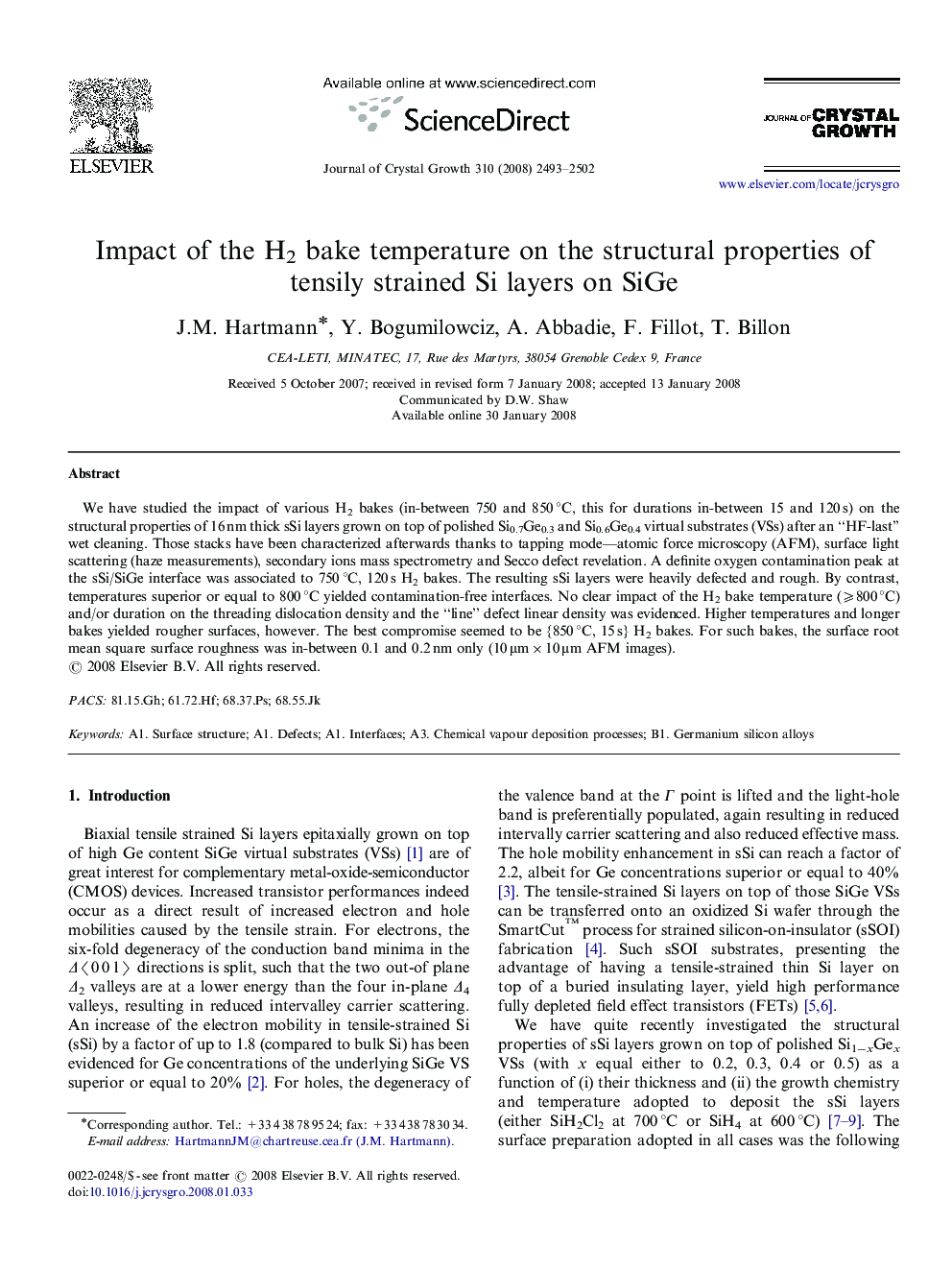| Article ID | Journal | Published Year | Pages | File Type |
|---|---|---|---|---|
| 1794737 | Journal of Crystal Growth | 2008 | 10 Pages |
We have studied the impact of various H2 bakes (in-between 750 and 850 °C, this for durations in-between 15 and 120 s) on the structural properties of 16 nm thick sSi layers grown on top of polished Si0.7Ge0.3 and Si0.6Ge0.4 virtual substrates (VSs) after an “HF-last” wet cleaning. Those stacks have been characterized afterwards thanks to tapping mode—atomic force microscopy (AFM), surface light scattering (haze measurements), secondary ions mass spectrometry and Secco defect revelation. A definite oxygen contamination peak at the sSi/SiGe interface was associated to 750 °C, 120 s H2 bakes. The resulting sSi layers were heavily defected and rough. By contrast, temperatures superior or equal to 800 °C yielded contamination-free interfaces. No clear impact of the H2 bake temperature (⩾800 °C) and/or duration on the threading dislocation density and the “line” defect linear density was evidenced. Higher temperatures and longer bakes yielded rougher surfaces, however. The best compromise seemed to be {850 °C, 15 s} H2 bakes. For such bakes, the surface root mean square surface roughness was in-between 0.1 and 0.2 nm only (10 μm×10 μm AFM images).
